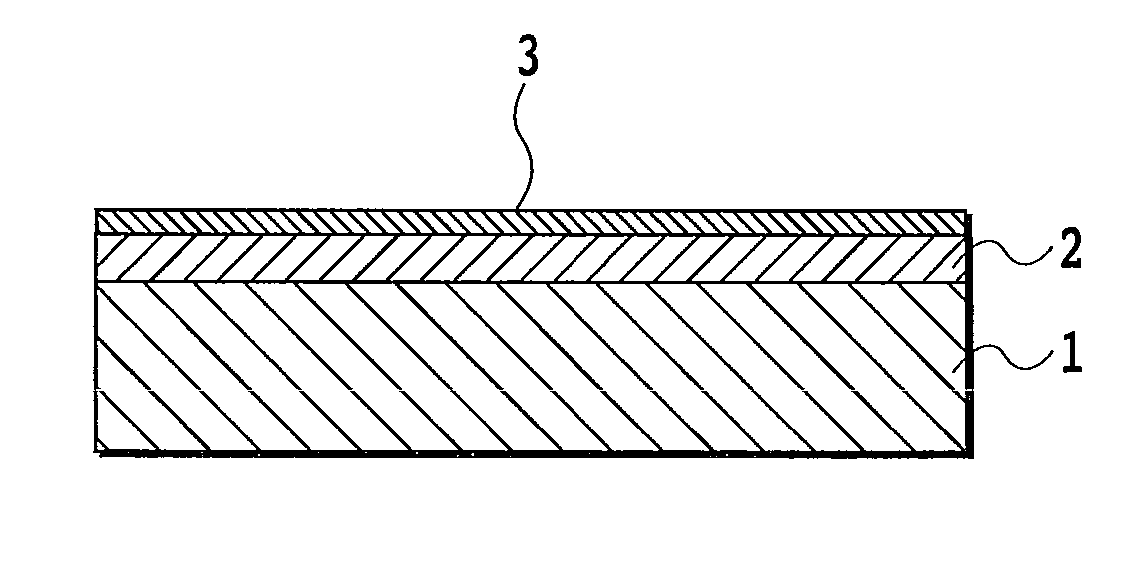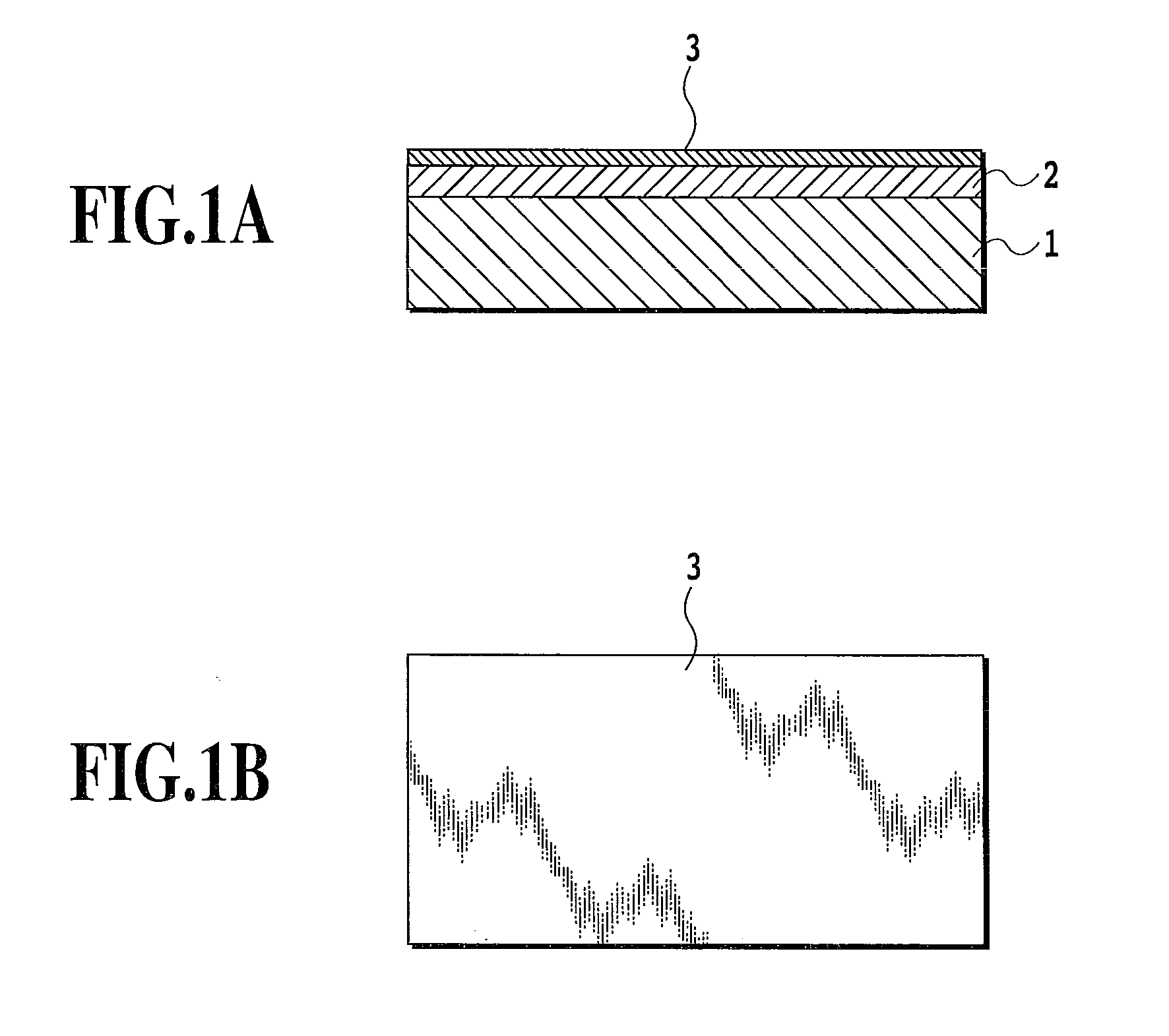Thin film lamination, thin film magnetic sensor using the thin film lamination and method for manufacturing the thin film lamination
a thin film, magnetic sensor technology, applied in the direction of instruments, galvano-magnetic devices, transportation and packaging, etc., can solve the problems of high temperature dependence of resistance and electron mobility, marked characteristic deterioration, and difficult fabrication of highly sensitive magnetic sensors, so as to reduce the al component, increase the corrosion resistance of the buffer layer, and high resistance
- Summary
- Abstract
- Description
- Claims
- Application Information
AI Technical Summary
Benefits of technology
Problems solved by technology
Method used
Image
Examples
example 1
[0063]FIG. 1A and FIG. 1B are views showing a sectional structure of a thin film lamination in accordance with the present invention, a structural view showing an InAsSb thin film lamination in accordance with the present invention: FIG. 1A is a sectional view; and FIG. 1B is its top view. In these figures, the reference numeral 1 designates a substrate, 2 designates an AlxGayIn1-x-ySb mixed crystal layer (buffer layer) (0xSb1-x (0xSb1-x (0
[0064]In the thin film lamination in accordance with the present invention, the AlxGayIn1-x-ySb mixed crystal layer (02 whose lattice constant is equal or close to that of the InAsxSb1-x thin film conducting layer is formed on the substrate 1, and the InAsxSb1-x thin film conducting layer 3 is formed directly on the AlxGayIn1-x-ySb mixed crystal layer as the operating layer. By forming such an insulating AlxGayIn1-x-ySb mixed crystal layer (02 between the ...
example 2
[0065]FIG. 2A to FIG. 2D are structural views of a thin film lamination in accordance with the present invention with a structure having an InAsSb thin film conducting layer constituting the operating layer sandwiched between an AlInSb mixed crystal layer 2 and an AlInSb mixed crystal layer 4 constituting a cap layer at its top and bottom: FIG. 2A is a sectional view; FIG. 2B is its top view; FIG. 2C is a sectional view of the thin film lamination when the InAsSb layer 3 constituting the operating layer is formed directly on a substrate 1, and the AlInSb mixed crystal layer 4 constituting an insulating layer of a cap layer is formed thereon; and FIG. 2D is a sectional view when a GaAs insulating protective layer 5 is formed.
[0066]The reference numeral 4 in FIG. 2A designates an AlInSb mixed crystal layer appearing on the top surface. A reason for assuming such a stacked structure is that since the electron mobility in the operating layer can be reduced because of a low electron mobi...
example 3
[0078]FIG. 3A and FIG. 3B are sectional views showing an example of a magneto-resistance element using a thin film lamination in accordance with the present invention. In FIG. 3A, the reference numeral 6 designates terminal electrodes for connecting the magneto-resistance element to the outside. The example has 3-layer metal thin film electrodes formed on the InAsSb operating layer 3 in ohmic contact. In addition, the reference numeral 7 designates 2-layer metal electrodes which are inserted between the terminal electrodes and are formed on the InAsSb thin film operating layer in ohmic contact. The electrodes 7, which are also called short-circuit electrodes or short-bar electrodes, are formed plurally between the terminal electrodes, and are used to improve the sensitivity of the magnetic resistance effect. FIG. 3B is a top view of the magneto-resistance element. The portion designated by the reference numeral 8 is a sensor section for detecting magnetism of the magneto-resistance ...
PUM
| Property | Measurement | Unit |
|---|---|---|
| thickness | aaaaa | aaaaa |
| thickness | aaaaa | aaaaa |
| thick | aaaaa | aaaaa |
Abstract
Description
Claims
Application Information
 Login to View More
Login to View More - R&D
- Intellectual Property
- Life Sciences
- Materials
- Tech Scout
- Unparalleled Data Quality
- Higher Quality Content
- 60% Fewer Hallucinations
Browse by: Latest US Patents, China's latest patents, Technical Efficacy Thesaurus, Application Domain, Technology Topic, Popular Technical Reports.
© 2025 PatSnap. All rights reserved.Legal|Privacy policy|Modern Slavery Act Transparency Statement|Sitemap|About US| Contact US: help@patsnap.com



